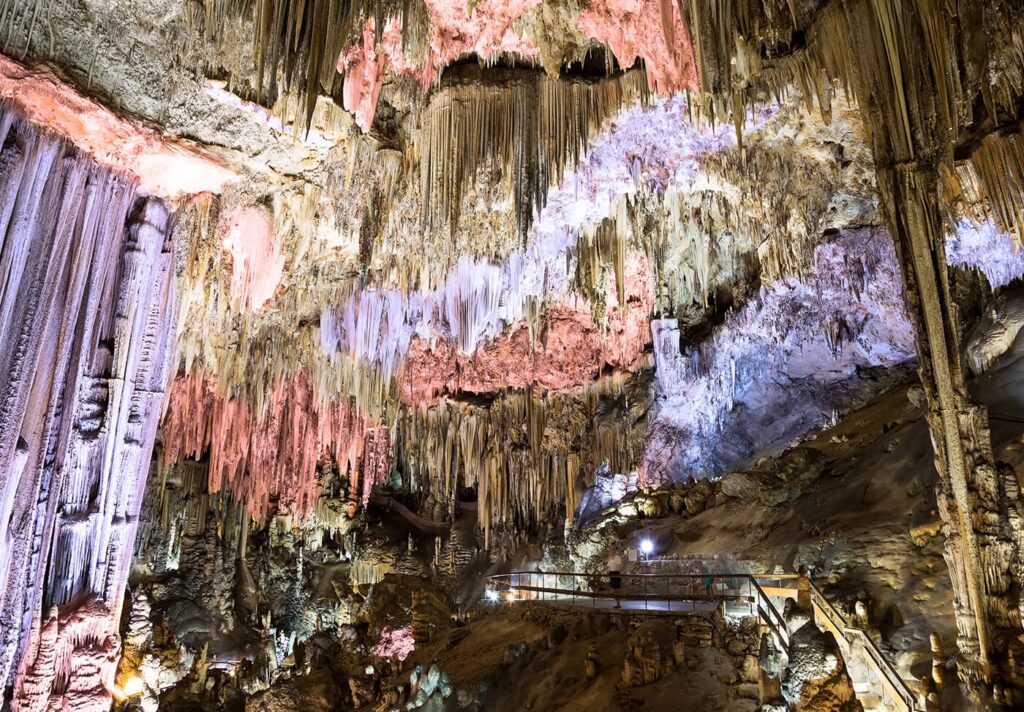Cueva de Nerja: Fascinating Caves with Ancient Paintings
Nestled in the picturesque town of Nerja on Spain’s Costa del Sol, the Cueva de Nerja is a captivating destination for tourists and history enthusiasts alike. These caves are not only a natural wonder but also a window into the past, offering a glimpse of ancient human life through their stunning rock formations and prehistoric paintings. Whether you’re an avid spelunker or simply looking for a unique day trip, the Cueva de Nerja promises an unforgettable experience.
What to See
The Cueva de Nerja is a sprawling network of underground chambers and galleries, stretching over five kilometers. However, only a portion of the caves is open to the public, ensuring that visitors can explore safely while preserving the delicate environment. As you wander through the caves, you’ll be mesmerized by the impressive stalactites and stalagmites, some of which are among the largest in the world. The highlight of the tour is the Hall of the Cataclysm, where a massive column stands at 32 meters high, earning it a spot in the Guinness World Records.
In addition to the natural formations, the caves are home to ancient paintings that date back to the Upper Paleolithic period. These paintings, depicting animals and human figures, offer a rare glimpse into the lives of our prehistoric ancestors. While some areas with paintings are restricted to protect these invaluable artworks, the guided tours provide detailed insights into their significance and history.
A Bit of History and Interesting Facts
Discovered accidentally in 1959 by a group of local boys, the Cueva de Nerja quickly gained attention for its archaeological significance. The caves have been inhabited by humans for thousands of years, with evidence of occupation dating back to the Neanderthals. Over the centuries, the caves have served various purposes, from shelter to a place of worship.
One of the most intriguing aspects of the Cueva de Nerja is the ongoing research into its prehistoric paintings. Some experts believe that these artworks could be the oldest known examples of human art, potentially created by Neanderthals rather than modern humans. This theory, if proven, would challenge our understanding of early human creativity and intelligence.
How to Get There and Tips for First-Time Visitors
The Cueva de Nerja is conveniently located just a few kilometers from the town center of Nerja, making it easily accessible for visitors. If you’re traveling by car, take the A-7 motorway and follow the signs to the caves. There is ample parking available on-site. Alternatively, you can take a bus from Nerja or nearby towns, with regular services running throughout the day.
For first-time visitors, it’s important to note that the caves maintain a constant temperature of around 20°C (68°F), so dress comfortably. The guided tours are available in multiple languages, ensuring that you can fully appreciate the history and beauty of the caves. It’s advisable to book your tickets in advance, especially during peak tourist seasons, to avoid long queues.
In conclusion, the Cueva de Nerja offers a unique blend of natural beauty and historical intrigue. Whether you’re marveling at the towering rock formations or pondering the mysteries of ancient art, a visit to these caves is sure to be a highlight of your trip to Spain.








